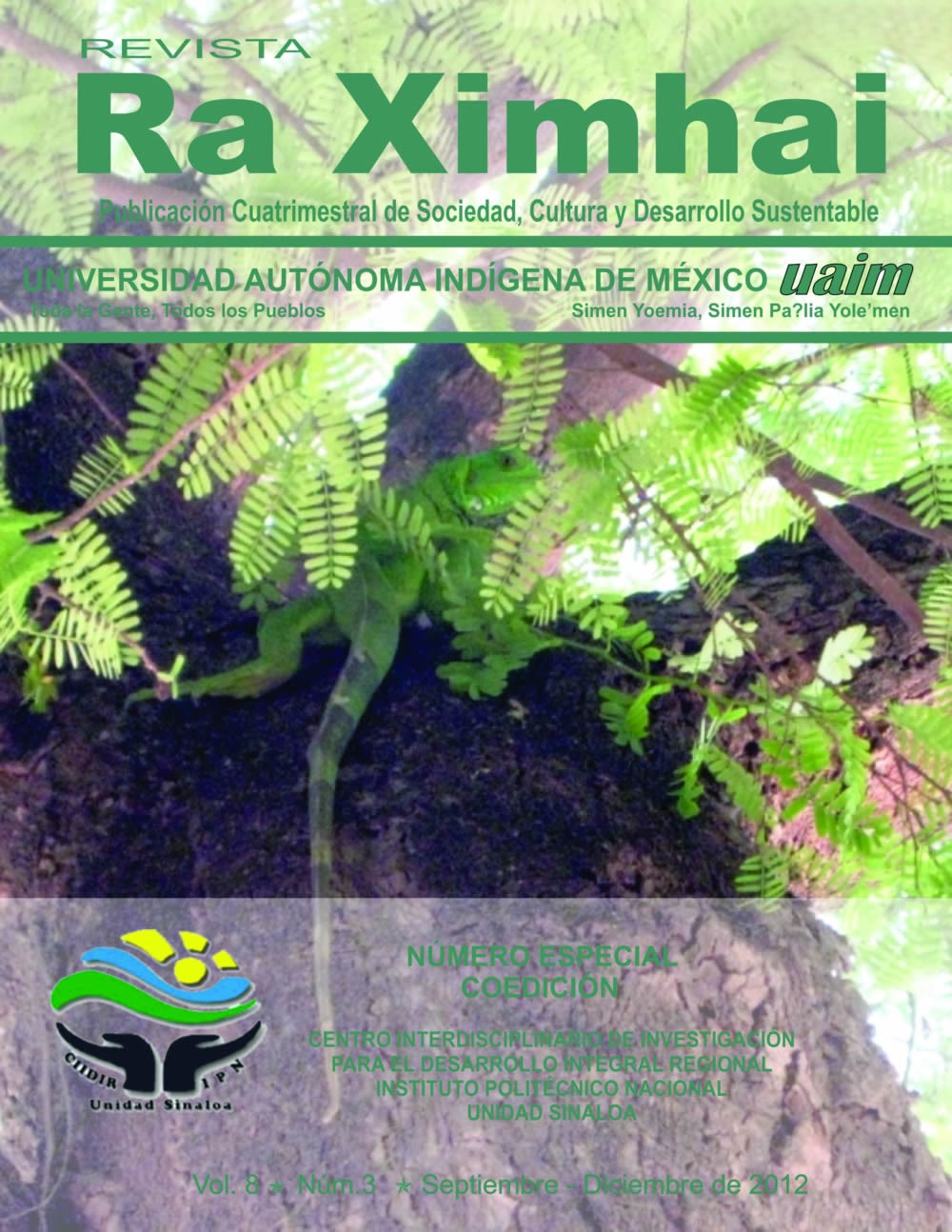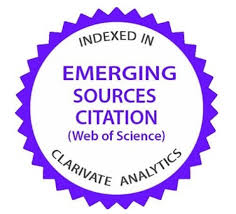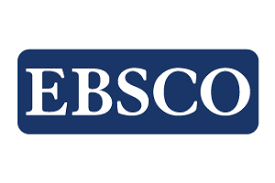Mejoramiento vegetal usando genes con funciones conocidas
DOI:
https://doi.org/10.35197/rx.08.03.e2.2012.08.jqPalabras clave:
Fitomejoramiento, gen nhr1, planta modificada genéticamente, OGMResumen
El mejoramiento de plantas mediante la inserción de un fragmento de ADN usando ingeniería genética representa una oportunidad para desarrollar cultivares o variedades con características económicamente deseables, como conferir ventajas adaptativas al medio ambiente, mejores propiedades nutrimentales y disminución del uso de agroquímicos. Dada la polémica alrededor de este tipo de tecnologías la justificación de su desarrollo y uso dependerá del entorno socio- cultural y deberá ser estudiado caso por caso. El presente documento tiene el objetivo de plantear un panorama de los Organismos Genéticamente Modificados (OGM), sus ventajas y desventajas, y establecer el porqué constituyen una oportunidad para desarrollar cultivares con características que por métodos tradicionales no podrían obtenerse.
Descargas
Citas
Acquaah, 2006. Principles of plant genetics and breeding. Wiley-Blackwell. Malden, MA, USA. p. 1-584.
Ahn, I. P. 2008. Glufosinate ammonium-induced pathogen inhibition and defense responses culminate in disease protection in bar-transgenic rice. Plant Physiology. 146(1): 213-227.
Altenbach, S. B. and Simpson, R. B. 1990. Manipulation of methionine-rich protein genes in plant seeds.
-160.
An, Z., Jing, W., Liu, Y. Y Zhang, W. 2008. Hydrogen peroxide generated by copper amine oxidase is involved in abscisic acid-induced stomatal closure in Vicia faba. Journal of Experimental Botany. 59(4): 815-825.
Avraham, T., Badani, H., Galili, S. Y Amir, R. 2005. Enhanced levels of methionine and cysteine in transgenic alfalfa (Medicago sativa L.) plants over-expressing the Arabidopsis cystathionine synthase gene. Plant Biotechnology Journal. 3(1): 71-79.
Bagla, P. 2010. Hardy cotton-munching pests are latest blow to GM Crops. Science. 327(5972): 1439- 1439.
Bai, Y. and Lindhout, P. 2007. Domestication and Breeding of Tomatoes: What have We Gained and What Can We Gain in the Future?. Annals of Botany. 100(5): 1085-1094.
Batty, N. and Evans, J. 1992. Biological ballistics-no longer a shot in the dark. Transgenic Research. 1(3): 107-113.
Beadle, G. W. 1939. Teosinte and The Origin of Maize. Journal of Heredity. 30(6): 245-247.
Botterman, J., Gosselé, V., Thoen, C. Y Lauwereys, M. 1991. Characterization of phosphinothricin acetyltransferase and C-terminal enzymatically active fusion proteins. Gene. 102(1): 33-37.
Bravo, A., Gill, S. S. Y Soberón, M. 2007. Mode of action of Bacillus thuringiensis Cry and Cyt toxins and their potential for insect control. Toxicon. 49(4): 423-435.
Broothaerts, W., Mitchell, H. J., Weir, B., Kaines, S., Smith, L. M. A., Yang, W., Mayer, J. E., Roa- Rodriguez, C. Y Jefferson, R. A. 2012. Gene transfer to plants by diverse species of bacteria. Nature. 433(7026):629-633.
Chambers, P. A., Duggan, P. S., Heritage, J. Y Forbes, J. M. 2002. The fate of antibiotic resistance marker genes in transgenic plant feed material fed to chickens. Journal of Antimicrobial Chemotherapy. 49(1):161-164.
Chávez-Araujo 1993. Mejoramiento de Plantas 1. Trillas. Mexico. pp. 1-136.
Chilton, M. D., Saiki, R. K., Yadou, N., Gordon, M. P. Y Quetier, F. 1980. T-DNA from agrobacterium ti plasmid is the nuclear DNA fraction of crown gall tumor cells. Proceedings of the National Academy of Sciences of the United States of America. 77, 4060-4064.
Cong, B., Barrero, L. S. Y Tanksley, S. D. 2008. Regulatory change in YABBY-like transcription factor led to evolution of extreme fruit size during tomato domestication. Nat Genet. 40(6): 800-804.
Demanéche, S., Sanguin, H., Poté, J., Navarro, E., Bernillon, D., Mavingui, P., Wildi, W., Vogel, T. M. Y Simonet, P. 2008. Antibiotic-resistant soil bacteria in transgenic plant fields. Proceedings of the National Academy of Sciences. 105(10): 3957-3962.
Doebley, J., Stec, A. Y Gustus, C. 1995. Teosinte branched1 and the origin of maize: Evidence for epistasis and the evolution of dominance. Genetics. 141(1): 333-346.
Eapen, D., Barroso, M. L., Campos, M. E., Ponce, G.; Corkidi, G., Dubrovsky, J. G. Y Cassab, G. I. 2003. A no hydrotropic response root mutant that responds positively to gravitropism in arabidopsis. Plant Physiology. 131, 536-546.
Ferreira, S. A., Pitz, K. Y., Manshardt, R., Zee, F., Fitch, M. Y Gonsalves, D. 2002. Virus coat protein transgenic papaya provides practical control of papaya ringspot virus in Hawaii. Plant Disease. 86(2): 101-105.
Fitch, M. M., Manshardt, R. M.; Gonsalves, D., Slightom, J. L. Y Sanford, J. C. 1992. Virus resistant papaya plants derived from tissues bombarded with the coat protein gene of papaya ringspot virus. Biotechnology. 10, 1466-1472.
Gatehouse, J. A. 2008. Biotechnological prospects for engineering insect-resistant Plants. Plant Physiology. 146(3): 881-887.
Gelvin, S. B. 2009. Agrobacterium in the Genomics Age. Plant Physiology. 150(4): 1665-1676.
Gonsalves, D., Gonsalves, C., Ferreira, S., Fitch, M., Manshardt, R. Y Slightom, J. 2004. Transgenic virus resistant papaya: from hope to reality for controlling papaya ringspot virus in Hawaii. APSnet 3340 1-12.
Grill, E. and Christmann, A. 2007. A plant receptor with a big family. Science. 315, 1676-1677. Gustafsson, Å. and Tedin, O. 1954. Plant-breeding and mutations. Acta Agriculturae Scandinavica. 4(1):
-639.
Henry, Y., Vain, P. Y Buyser, J. 1994. Genetic analysis of in vitro plant tissue culture responses and regeneration capacities. Euphytica. 79(1): 45-58.
Kasuga, M., Liu, Q., Miura, S., Yamaguchi-Shinozaki, K. Y Shinozaki, K. 1999. Improving plant drought, salt, and freezing tolerance by gene transfer of a single stress-inducible transcription factor. Nature Biotechnology. 17(3): 287-291.
Kramer, M. G. and Redenbaugh, K. 2004. Commercialization of a tomato with an antisense polygalacturonase gene: The FLAVR SAVRGäó tomato story. Euphytica. 79(3): 293-297.
Krebs, G. and Kilpatrick. 2011. Lewin's GENES X. Jones and Bartlett Publishers, LLC. USA. p. 1-930.
Miyazaki, J. H. and Yang, S. F. 1997. The methionine salvage pathway in relation to ethylene and polyamine biosynthesis. Physiologia Plantarum. 69, 366-370.
Nielsen, K., Sorensen, P. G. Y Hynne, F. 1998. Chaos in glycolysis. Journal of Theoretical Biology. 186, 303-306.
Nielsen, K. M., Bones, A. M., Smalla, K. Y van Elsas, J. D. 1998. Horizontal gene transfer from transgenic plants to terrestrial bacteria -a rare event? FEMS Microbiology Reviews. 22(2): 79- 103.
Paran, I. and Van der Knaap, E. 2007. Genetic and molecular regulation of fruit and plant domestication traits in tomato and pepper. Journal of Experimental Botany. 58(14): 3841-3852.
Parrott, W. 2010. Genetically modified myths and realities. New Biotechnology. 27(5): 545-551.
Pei, Z.-M., Murata, Y., Benning, G., Thomine, S., Klusener, B., Allen, G. J., Grill, E. Y Schroeder, J. I. 2012. Calcium channels activated by hydrogen peroxide mediate abscisic acid signaling in guard cells. Nature. 406(6797): 731-734.
Quiroz-Figueroa, F., Rodríguez-Acosta, A., Salazar-Blas, A., Hernandez-Dominguez, E., Campos, M.; Kitahata, N., Asami, T., Galáz-Ávalos, R. Y Cassab, G. 2010. Accumulation of high levels of ABA regulates the pleiotropic response of the nhr1 arabidopsis mutant. Journal of Plant Biology. 53(1): 32-44.
Salazar-Blass, M. A. 2008. Efecto del estrés hídrico sobre el crecimiento y desarrollo en las mutantes nhr-1 (no hydrotropic response) y suh-1 (superhydrotropic) de Arabidopsis thaliana ecotipo Columbia-0. 1-38.
Sanahuja, G., Banakar, R., Twyman, R. M., Capell, T. Y Christou, P. 2011. Bacillus thuringiensis: a century of research, development and commercial applications. Plant Biotechnology Journal. 9(3): 283-300.
Sanford, J. C. 2000. The development of the biolistic process. In Vitro Cell Developmental Biology-Plant.
(5): 303-308.
Schubert, S., Neubert, A., Schierholt, A., Sümer, A. Y Zörb, C. 2009. Development of salt-resistant maize hybrids: The combination of physiological strategies using conventional breeding methods. Plant Science. 177(3): 196-202.
Senior, I. J. and Dale, P. J. 2002. Herbicide-tolerant crops in agriculture: oilseed rape as a case study.
Plant Breeding. 121(2): 97-107.
Seo, P. J., Xiang, F., Qiao, M., Park, J. Y., Lee, Y. N., Kim, S. G., Lee, Y. H., Park, W. J. Y Park, C. M.
The MYB96 Transcription factor mediates abscisic acid signaling during drought stress response in arabidopsis. Plant Physiology. 151(1): 275-289.
Service, R. F. 2007. A growing threat down on the farm. Science. 316(5828): 1114-1117. Shannon, M. C. 1997. Adaptation of plants to salinity. Volume. 60, 75-120.
Tsiantis, M. 2011. A transposon in tb1 drove maize domestication. Nature Genetics. 43(11): 1048-1050. Uzogara, S. G. 2000. The impact of genetic modification of human foods in the 21st century: A review.
Biotechnology Advances. 18(3): 179-206.
Vrebalov, J., Ruezinsky, D., Padmanabhan, V., White, R., Medrano, D., Drake, R., Schuch, W. Y Giovannoni, J. 2002. A MADS-Box gene necessary for fruit ripening at the tomato ripening- inhibitor (Rin) Locus. Science. 296(5566): 343-346.
Wang, R. L., Stec, A., Hey, J., Lukens, L. Y Doebley, J. 1999. The limits of selection during maize domestication. Nature. 398(6724): 236-239.
Xiong, L.; Wang, R. G.; Mao, G. Y Koczan, J. M. 2006. Identification of drought tolerance determinants by genetic analysis of root response to drought stress and abscisic acid. Plant Physiology. 142(3): 1065-1074.
Xu, Y.; Li, Z. K. Y Thomson, M. 2012. Molecular breeding in plants: moving into the mainstream.
Molecular Breeding. 29(4): 831-832.
Zamir, D. 2001. Improving plant breeding with exotic genetic libraries. Nat Rev Genet. 2(12): 983-989.
Zhang, H. X. and Blumwald, E. 2001. Transgenic salt-tolerant tomato plants accumulate salt in foliage but not in fruit. Nature Biotechnology. 19, 765-768.
Zhao, J. Z., Cao, J., Collins, H. L., Bates, S. L., Roush, R. T., Earle, E. D. Y Shelton, A. M. 2005. Concurrent use of transgenic plants expressing a single and two Bacillus thuringiensis genes speeds insect adaptation to pyramided plants. Proceedings of the National Academy of Sciences of the United States of America. 102(24): 8426-8430.
Descargas
Publicado
Cómo citar
Número
Sección
Licencia
Derechos de autor 2012 Jesús Quiroz Chávez, Luz María García Pérez, Francisco Roberto Quiroz Figueroa

Esta obra está bajo una licencia internacional Creative Commons Atribución-NoComercial 4.0.
Usted es libre de:
- Compartir — copiar y redistribuir el material en cualquier medio o formato
- Adaptar — remezclar, transformar y construir a partir del material
- La licenciante no puede revocar estas libertades en tanto usted siga los términos de la licencia
Bajo los siguientes términos:
- Atribución — Usted debe dar crédito de manera adecuada , brindar un enlace a la licencia, e indicar si se han realizado cambios . Puede hacerlo en cualquier forma razonable, pero no de forma tal que sugiera que usted o su uso tienen el apoyo de la licenciante.
- NoComercial — Usted no puede hacer uso del material con propósitos comerciales .
- No hay restricciones adicionales — No puede aplicar términos legales ni medidas tecnológicas que restrinjan legalmente a otras a hacer cualquier uso permitido por la licencia.








